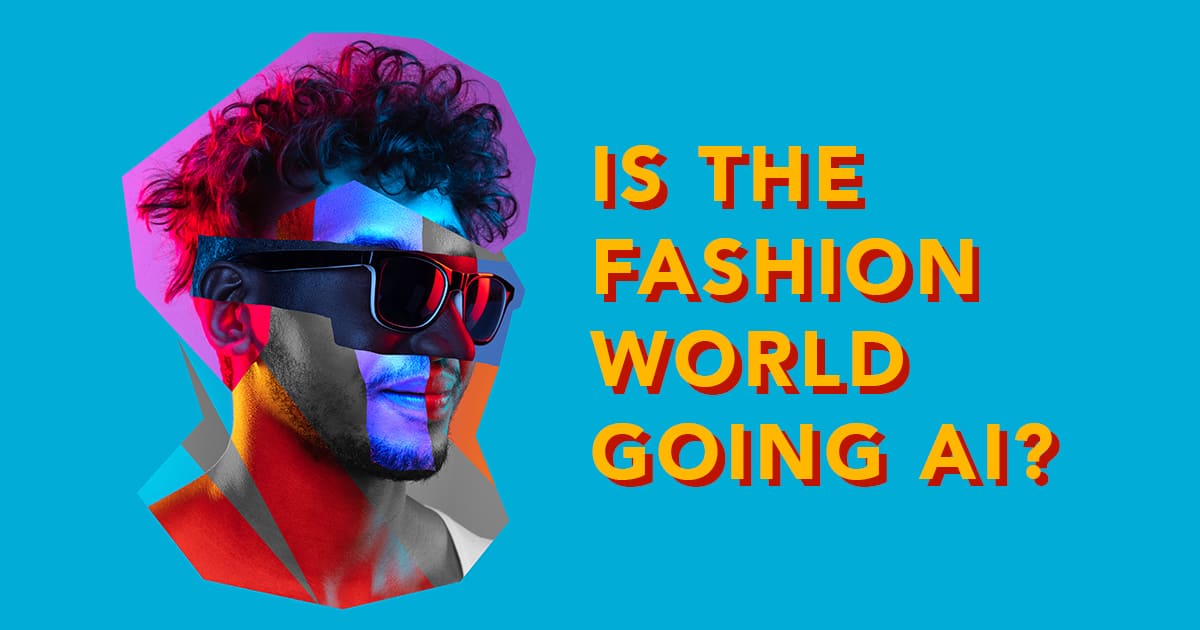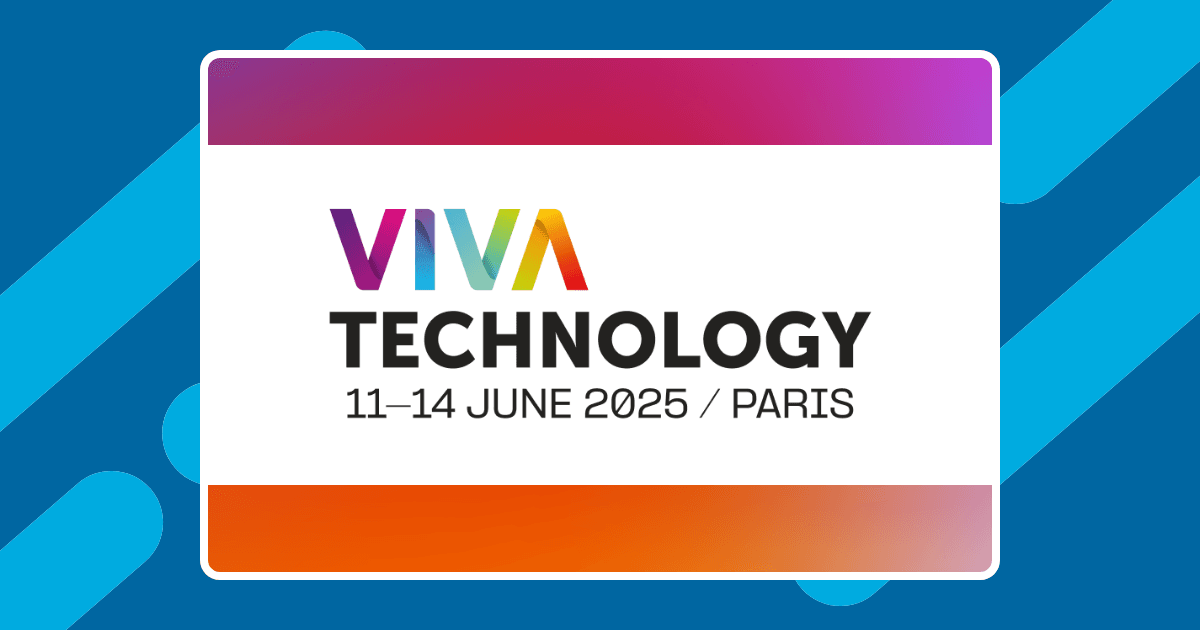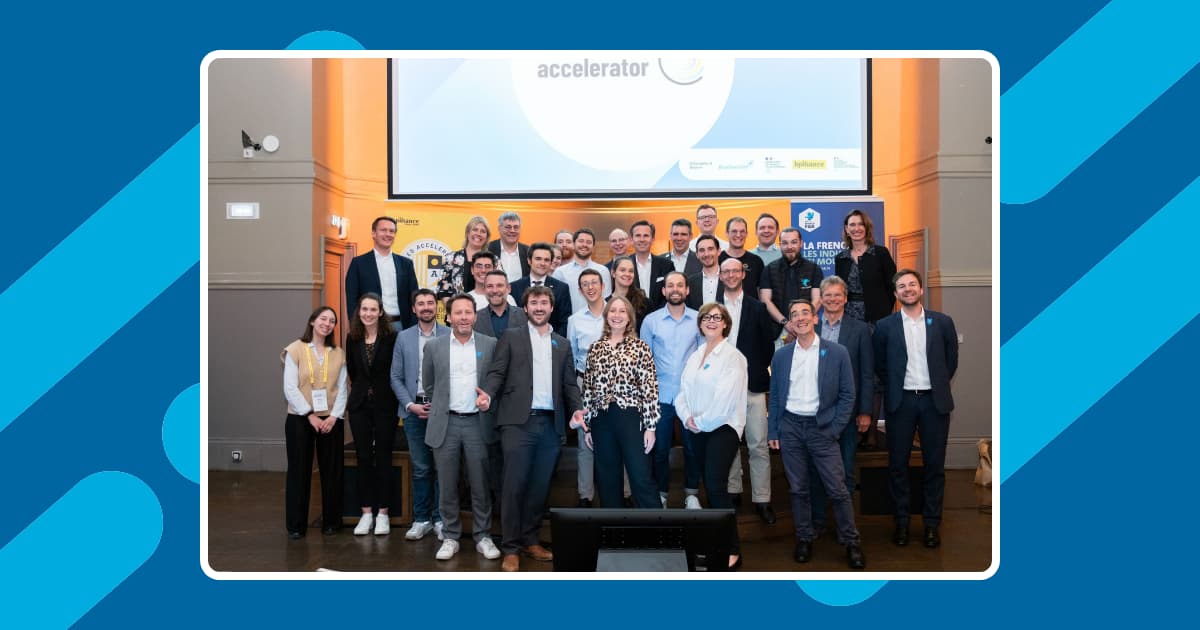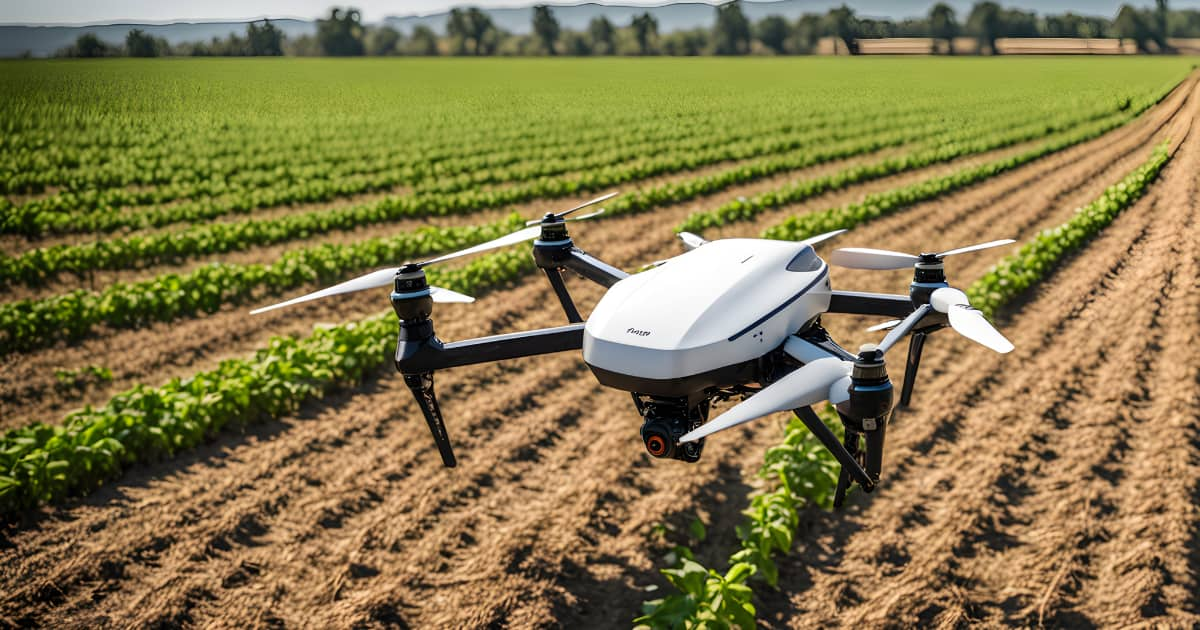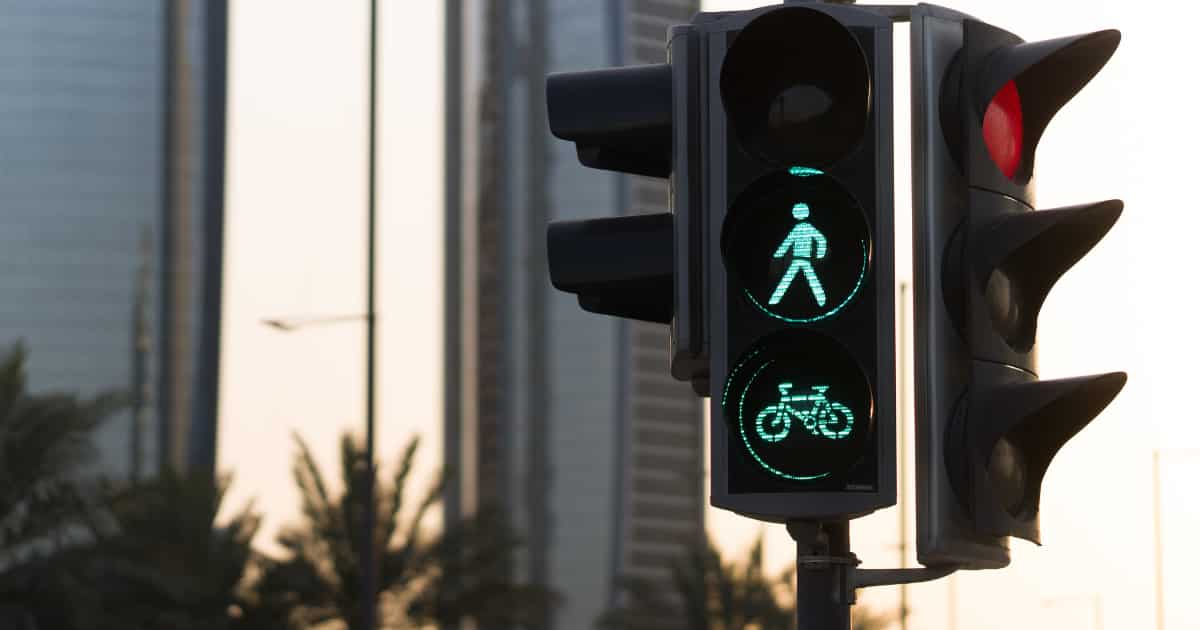When you think of artificial intelligence, it’s not the fashion or luxury sectors that first come to mind. And yet, AI in these sectors is not outdone!
Interests and use cases are abundant. With AI algorithms already being developed for many companies, some of which will be taken as examples later on. Far from being the least advanced sector in machine learning, the fashion sector even has a very high CAGR of around 40%. A study predicts that AI in fashion will increase from $228M in 2019 to $1260M in 20241. Thus, the fashion industry will prove to be of great interest for the development of deep learning algorithms.
In this article, we will present the uses and benefits of AI for the fashion industry before tackling the subject of the obstacles to the integration of AI in this field.
The uses of AI in fashion
The use of neural networks in fashion comes in many forms and applications. It uses several types of AI depending on the nature of the data: visual, textual or encrypted. We can classify the uses according to several AI typologies and activities, even if some applications are transversal.
Computer vision: visual data analysis
Image analysis is a technology often used in the industrial world for inspection, control or supervision activities.
To begin with, one application that is currently inspiring R&D work in the fashion industry is the use of AI for fraud and/or counterfeit detection. Indeed, frauds and counterfeits of major brands are common and damaging, especially for e-commerce sites. Some of the ads posted present fraudulent items that should be able to be detected and then removed. This is the reason why algorithms are being developed to perform fraud detection. The checks are made from photos and focus on certain characteristics of the items to compare with legitimate images and detect fakes (for example, for shoes, these are the brand logo, the laces or the soles). Entrupy, a company supported by LVMH, is well known for its fraud detection algorithms, especially for leather goods. These solutions make it possible to limit fakes, thus limiting revenue losses and avoiding the deterioration of the brand image affected by poor quality reproductions2.
Another use of computer vision for the fashion industry is focused on visualization and more precisely on virtual fitting. Indeed, AIs are developed to allow us to see in real time, through a display, how an outfit, a make-up or a haircut/color could be worn. The artificial intelligence will recognize the person and apply a filter that will precisely modify the appearance by simulating the wearing of the new outfit or cut.
Knowing that e-commerce is a large market and that fitting is one of the main issues for online textile purchases, these types of solutions are strategic. If they can then allow for fitting at home, it can change our lives. Currently, these solutions are being developed to improve the customer experience and satisfaction, while boosting revenues. Some terminals have already been developed by Adobe3 with its Sievenet solution, but also by Walmart4 with its Zeekit solution, or even by L’Oréal5 for make-up.
Finally, a last use of computer vision concerns the assistance and the control in the production lines. It is not signs of fraud or counterfeiting that are sought here but marks of defects or malfunctions during production. Thus, when the fabrics are processed by the machines, it is possible by video control to identify the presence of a defect, which could for example alert on a possible malfunction of a machine and thus make it possible to avoid malfunctions. In addition, the placement and cutting of fabrics can also be assisted by AI, which will allow for precise calculation of the positioning of fabrics to achieve optimal cuts. This type of data analysis helps to optimize processes, avoid material waste and reduce maintenance costs. A solution from Tekyn illustrates this type of use6.
NLP (Natural Language Processing): textual data analysis
Textual data analysis allows us to understand and interpret human language, which is a complex task but can be fruitful for industries regarding the interpretation of human opinions, expectations and needs.
Thus, the first use of NLP in the fashion world concerns chatbots. These machine learning algorithms are designed to interact with users by answering questions. These AIs will analyze words and highlight certain elements depending on the interpretation of the consumer’s sentence. Fashion brands use it to assist the consumer in navigating through the website and in exploring products, such as watches, perfumes or textile products. The goal is to improve customer relations and user experience. Many companies in the sector are experimenting with the use of these chatbots, such as Tommy Hilfiger, Jaeger-LeCoultre, Burberry, Audemars Piguet, Estée Lauder or Louis Vuitton7. The use of these bots is also correlated to the next use of AI presented below: recommendation.
Indeed, AI is also used in the fashion industry to make recommendations. Customer relationship and user experience are important aspects for the manufacturers of this sector. Thus, putting forward products adapted to the desires/needs/expectations of each person is a clearly identified priority. Data Science helps in this sense by learning the consumption habits of users. Algorithms will associate keywords and values during the navigation on the site, which will allow to interpret the consumer’s behavior to finally anticipate his needs and present them in the form of recommendations. Also, these elements can enrich chatbot algorithms, which can then put forward products that are even more relevant to consumers. The benefits perceived by companies in the textile industry still concern the user experience, but also the direct increase in sales. Some companies, like La Redoute, have decided to develop their recommendation algorithms, in particular to improve their cross-selling8. While some companies specialize in the development of recommendation algorithms for the ready-to-wear industry, such as Shoptrue which has developed its own recommendation platform9.
BI (Business Intelligence): numerical data analysis and data fusion
Business Intelligence concerns the processing of data, most often encrypted, the purpose is to monitor an activity by offering decision support. Visualization functions are frequently used, with representations by dashboard-type interfaces.
AI is often used to make forecasts. For the fashion industry, these predictive analyses can concern current and future trends. The goal is to analyze the research and purchases made by consumers to, for example, identify if behaviors are out of the ordinary and thus anticipate the emergence of a new fashion. The identified trends can be used to guide commercial actions, allowing to limit losses linked to failures while improving gains linked to successes. Forecasts can also be used simply to monitor the general activity of the company by making predictions on figures, such as sales volumes according to periods, in particular to optimize inventory management. Forecasting algorithms for the fashion industry are numerous, we can mention for example the one of the giant Google “Think With Google”, but also French algorithms like Scrambled which is used by the Etam chain of stores, or Heuritech which was a start-up winner of the “LVMH Innovation Award” in June 201710.
In connection with prediction, the analysis of searches, purchases and consultations can be used to analyze the customer journey. This practice is already widespread in the retail sector and allows to identify the customer profile. Thus, more personalized actions can be undertaken, with targeted marketing in particular. This behavioral prediction can be even more relevant in real stores, where computer vision techniques can be added to analyze consumer movements11.
Finally, AI can also be used in fashion for research and creation. In particular for the formulation of cosmetic products or the elaboration of textile products. Indeed, the search for components or ingredients can be long and costly, being done on a principle of successive tests exploring certain combinations. AI can anticipate test results and propose combinations with a higher chance of success, thus limiting failures. The principle is the same for creation, with the assistance of AI to create designs, with algorithms like DALL-E that can be used. Cosmetic formulation is strongly reminiscent of AI algorithms for formulation in health, which are used in particular to find the best molecules in the development of drug treatments. In the field, we can cite the Carto algorithm developed by Givaudan to help perfumers find the optimal combinations12. There is also a French start-up, ChemIntelligence, which has developed a formulation software and which includes Sanofi as a client in the medical field and LVMH as a client in the haute-couture industry13.
The variety of AI applications for the fashion industry gives a concrete idea of the power of this technology, and allows us to foresee the numerous advantages that these algorithms bring, even if there are currently obstacles that slow down their implementation.
The obstacles to the integration of AI
The integration of AI in the fashion industry seems very promising, however the operational use of algorithms is not simple. Indeed, artificial intelligence technologies still face several challenges, which are inherent to their nature.
Some brakes specific to the fashion industry
Indeed, for the fashion industry, some issues are particularly irritating, especially concerning NLP technologies.
First of all, the relationship with consumers is not always a success with chatbots: “40% of people interrupt the communication with a robot after the first interaction”. In fact, the acceptance of this technology is not unanimous and many people refuse to have a conversation with a “robot”. The reasons can be multiple, but we can underline an insufficient understanding on the part of the algorithms, in particular when the conversations go beyond the general cases, which can make them difficult.
The algorithms are indeed good at performing specific tasks or answering specific questions, but the generalization of their behavior is extremely complex, if not currently impossible. However, the algorithms often work on a continuous learning system, which could allow us to imagine an improvement in the way conversations are held14.
But, another big problem can arise and affect chatbots. This one concerns the robustness of the algorithms. Indeed, AI algorithms are often confronted with questions about their performance and the “instability” of their answers. This problem is very well represented by adversarial attacks, which demonstrates for example that in the case of images, it is enough to change a few pixels (invisible to the naked eye) for the algorithm’s response to change radically15.
As for chatbots, they can be manipulated to change their behavior and no longer give the expected answers, as was the case for a Microsoft chatbot, which started to make racist remarks in tweets16. Thus, making sure that the algorithms work properly is necessary and resisting a certain level of “noise” is important considering the robustness issues of AIs.
Moreover, it is easy to imagine problems related to companies regarding these aspects. Indeed, StockX, a sneaker resale site that certified the authenticity of the pairs sold, found itself at the heart of a legal case with Nike. The latter noticed that StockX had approved the authenticity of fraudulent shoes and had sold these pairs as being certified authentic. As a result, Nike filed a lawsuit, which had the effect of removing the authenticity endorsement for StockX17. Thus, if an AI is trained to certify the authenticity of shoes and makes errors of the same type as those made by StockX, it is also conceivable that legal action could occur. Hence the importance of doing AI validation.
In relation to robustness and validation, the question of bias also arises. These affect the behavior of the algorithm and alter its performance. Biases are numerous, and may concern many different notions: sampling bias, measurement bias, reinforcement bias, etc. The latter are very often related to training data and this for several reasons: by lack of data diversity, by the presence of poor quality data or marked data, etc. These biases are problematic because they call into question the integrity and robustness of the models, while at the same time being complex to identify and eliminate because they are often invisible to the naked eye. Thus, it is important to conduct assessments of the presence of biases upstream in the datasets, to allow them to be identified and dealt with.
But there are also issues that hinder the integration of an AI in general
First of all, there is the legal aspect, with the question of governance that arises, in connection with the RGPD regulation18. Indeed, the data used by AIs, not only in the fashion sector, can quickly become sensitive. Thus, their exploitation means that it is necessary to comply with the requirements for processing this type of data and therefore to put in place a certain number of devices, which are not easy to manage. For example, these elements must be taken into account before realizing recommendation AI or virtual fitting. In the latter case, virtual booths use morphological data that are considered sensitive, as they are biometric data that can give information on gender or that could, among other things, allow the detection of the presence of a genetic disease19. Thus, the complexity of managing this data can greatly hinder the implementation of AI.
Also, the environmental aspect comes into consideration since ecological awareness. Here we are talking about energy consumption, because artificial intelligence is generally very greedy in terms of computing power and data volume. Since the development of connected objects and Big Data, it is known that computers and storage servers have become a major source of CO2 emissions. This issue, which has led to the emergence of GreenIT, raises new questions for companies that are very concerned about their CSR, such as companies in the fashion industry. GreenIT is still in development and aims to propose less-consumptive alternatives in terms of computer and server use20. Therefore, GreenIT solutions can also directly influence the development of AI algorithms, especially regarding the training of networks. It is in this context that the frugality of AI has been put forward, in order to respond to the challenges of data volumes and to limit the power consumption necessary to train a network. However, this sector is booming and requires a certain amount of R&D effort. So this dimension can potentially slow down integration due to the length of the work required to develop GreenIT or the reluctance of some players to develop new technologies that could be revised following policy changes.
Finally, concerning the ethical aspects, there are general challenges in the world of AI, related to the perception of the technology. In reality, the image of artificial intelligence is not free of unrepresentative yet very telling comparisons. The images commonly associated with AI often depict the technology as a robotic copy of a human being, even going as far as science-fictional representations of a “terminator”-like killer robot. However, these images do not reflect the current state of the art of AI algorithms and the willingness to use these technologies. But to summarize, algorithms are only efficient to perform very precise tasks, which makes it impossible to perform different tasks, even if they are very close. Moreover, the European Union has expressed the will to orient the development of AI for human assistance applications and not to replace the human being, especially concerning the support to the realization of long, boring and without much added value tasks.
Also, the algorithms will have to include ethical notions, i.e. there will be, among other things, duties of transparency, proofs of correct operation or elements of accountability to be provided. Even if the fashion world suffers less from this bad image of AI, the fact remains that the use of this technology still confronts these ethical questions. Public opinion currently remains a brake on the integration of AI, until this mentality is brought to change. For this reason, it will be necessary to bring confidence in this technology, in particular by following the European directives, which will soon become mandatory for the development of AI, through the future AI-Act21.
Hence, the development of AI must take these obstacles into account and seek to overcome them, both in terms of technical aspects and societal aspects. These are all issues that are currently obstacles to the operational integration of AI, but a certain number of them could be addressed by including algorithmic validation dimensions.
Conclusion
To conclude, the uses of AI in the fashion industry are numerous. This sector integrates different types of AI with algorithms dealing with various data: visual, textual or numerical.
The added values concern all the important steps of this industry, starting with the industrial aspects of production and going up to customer relations. Thus, a number of companies exploit the market by developing solutions specifically for the fashion industry.
However, their operational integration is often hampered by various causes. The development of AI is both technically and socially complex. European initiatives regarding AI standardization will allow this technology to evolve more efficiently within a defined framework by 2025, notably by allowing the introduction of algorithmic validation22. Among other things, it is hoped that the trust established will be able to change mentalities about AI.
The future of AI for the fashion industry is still bright. In addition to the already numerous application areas and added values of AI in this sector, another branch could emerge concerning the integration of AI directly into textiles. This new direction is called fibertronics. The goal would be to embed AI directly into clothing23.
Several use cases and advantages are put forward. The clothes developed could enable real-time data analysis, in particular to adapt the properties of fabrics. Thus, in the example of sports, the fabrics could adapt to perspiration to ventilate more effectively, in the field of well-being the garment could adapt the body temperature by activating a heating or cooling function, finally with the field of health the wearable could include robotic assistance to, for example, adjust the muscle power of people with reduced mobility to help them get up. Thus, perhaps we could imagine that the fashion sector would come to meet the embedded sector.
Sources
- AI in Fashion Market Growth Drivers & Opportunities | MarketsandMarkets ↩︎
- Le système d’authentification Entrupy détecte les sneakers contrefaites en 60 secondes ↩︎
- Adobe a développé une technologie d’essayage virtuel pour le secteur de la mode ↩︎
- Walmart propose d’essayer virtuellement des vêtements sur son propre corps — Siècle Digital ↩︎
- L’Oréal lance l’essayage virtuel de maquillage sur Amazon grâce à l’Intelligence artificielle ↩︎
- TEKYN mise sur la durabilité dans l’industrie textile – La French Fab ↩︎
- Les marques de luxe et les chatbots | Blog Mobibot.io ↩︎
- Cross selling piloté par l’IA: l’exemple de la redoute ↩︎
- AI-driven fashion platform Shoptrue constantly learns its users shopping habits | TechCrunch ↩︎
- Intelligence Artificielle & la Mode – Scient ↩︎
- Comment l’IA et l’analytique vidéo se mettent au service du retail [Tribune] ↩︎
- Cosmétique algorithmique : quand l’intelligence artificielle investit la beauté – Marie Claire ↩︎
- La cosmétique se convertit à l’intelligence artificielle | La Gazette Normandie ↩︎
- L’intelligence artificielle et la mode – FashionAdresse ↩︎
- Adversarial Examples : Définition et importance en machine learning ↩︎
- A peine lancée, une intelligence artificielle de Microsoft dérape sur Twitter ↩︎
- Après les accusations de Nike, Stock X retire ses badges d’authenticité ↩︎
- Intelligence artificielle ou low-tech : quelles tendances pour la mode ↩︎
- Mode & IA : La confidentialité des cabines d’essayage virtuelles — Gerrish Legal ↩︎
- Measuring the environmental impacts of artificial intelligence compute and applications : The AI footprint | OECD Digital Economy Papers ↩︎
- Ethics guidelines for trustworthy AI | Shaping Europe’s digital future ↩︎
- https://artificialintelligenceact.eu/the-act/ ↩︎
- https://scient.fr/article-intelligence-artificielle-la-mode/ ↩︎

